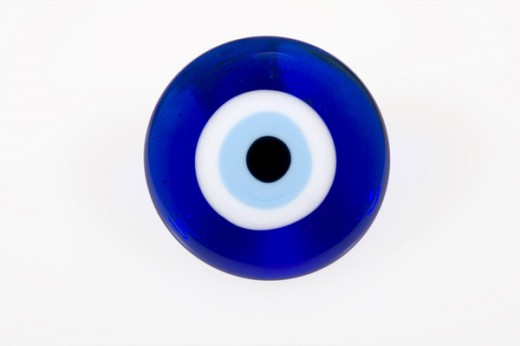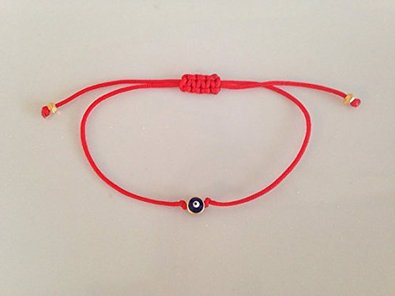The Evil Eye

Welcome. Today we will be going over the Evil Eye. What is it? Where did it come from? And is it scriptural?
- What Is It?
- Is It Scriptural?
- Where Does It Come From?
What Is It?
The Evil Eye (Ayin ha-Ra) is supposedly able to harm or cast a curse on a person. Although the Evil Eye is not referenced in the scriptures, it is discussed in other Rabbinic literature such as the Kabbalah (which we will go over another time). It is believed to be the reason for sickness, tragedy, and pain in the world. Nothing is off limits from its influences. The most frequent cause of harm from the Evil Eye is considered to be jealousy. It is used to warn people against unnecessary flaunting of wealth and admiration to avoid resentment from others. The way it works is that someone gives a malicious gaze towards someone who has done such a thing as flaunting their wealth or possessions (Proverbs 11 22-28 speaks against such things). Great lengths are taken to hide celebrations from the Evil Eye; for instance, double weddings are never permitted for fear of uttering too many blessings and tempting the Evil Eye. It has also been explained as such; when someone looks on or covets another person's possessions, they accidentally make the Most High open up the books in the realm to see if they deserve it or not. If he finds that he made a mistake, he takes it away.
Once it has been provoked, one must counter its harmful effects. If it is attracted, mirrors and red or blue objects are utilized to veer away its gaze, while a sacred verse or extreme motion (jumping around or throwing oneself upon the ground) may frighten it away. Some other ritual gestures developed to counteract the effects of the Evil Eye include:
• Placing a precious stone between the eyes,
• Putting a spot of dirt or ash on the forehead of a child,
• Spitting three times onto the fingers,
• Throwing salt into the corners of a room,
• Piercing a lemon with iron nails,

Is It Scriptural?
As I said earlier, it has also been explained as such; when someone looks on or covets another person's possessions, they accidentally make the Most High open up the books in his realm to see if they deserve it or not. If he finds that he made a mistake, he takes it away.
The idea of him making a mistake is false according to scripture. He makes no mistakes. His perfection and greatness disallow mistakes (Psalm 145 3). In the original language, the word translated "fathom" incorporates the thought of "possible to find out or enumerate." In other words, his greatness is infinite. This statement cannot refer to a fallible person, for, with even one mistake, his greatness would be quantifiable and finite.
Another interpretation is that if someone covets what you have, they place a curse on you and your possessions. This can supposedly be deflected by saying certain phrases or wearing amulets that have the Eye symbol, such as the popular Red String.
Now, this is not to say that flaunting or coveting is okay, nor that it will not eventually come back upon someone. But the idea that you can inflict or deflect a curse with charms or gazes is not scriptural. While it is found in some works like the Talmud and Kabbalah, not all of the works of those books are considered to be divinely inspired and must be rightfully divided. When we read Deuteronomy 18 9-13, we can see that such a thing is prohibited. And there is no justice in a system that causes others to suffer for the jealousy of others.
Where Does It Come From?
Eye symbolism has been a prevalent thing in pagan nations, and in some modern day religions as well. It seems that the earliest occurrence of this is from Egyptian mythology, but I could be wrong. More history on eye symbolism as it relates to the Evil Eye can be found here. It is also prevalent in a lot of symbolism used in the media, generally associated with sinful acts.
The purpose of Torah is to not be like the other nations, which practiced such sorcery. The only thing that can inflict or take away a curse is the Almighty. Simply giving an angry gaze or using a charm will do nothing. It may even end up cursing you in the process. There is no verse in the Tanakh that gives anyone the permission to believe in such an idea as this.
Peace and blessings, and all praises to the Most High.



